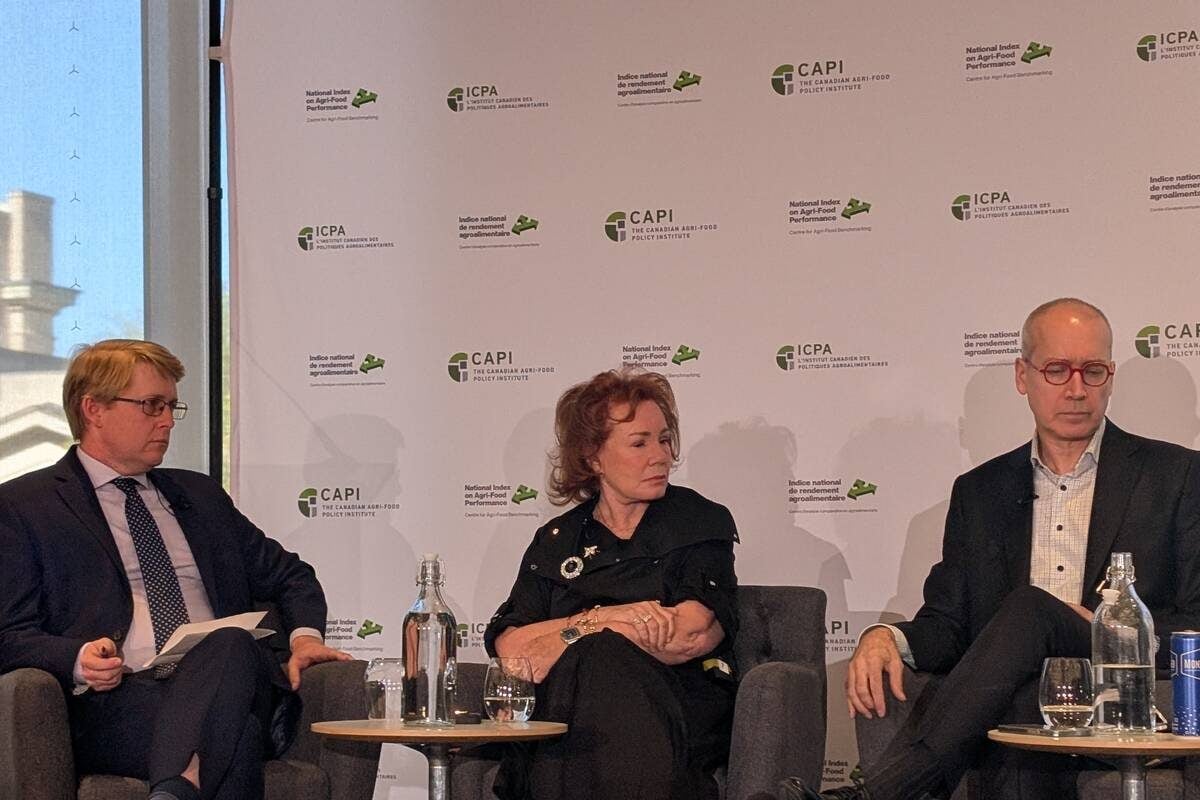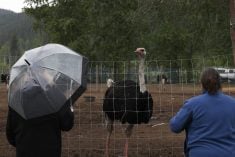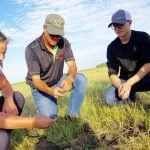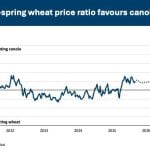The contributions of Alberta women have been recognized in a special art exhibition in Edmonton.
Seven women who have contributed to the province were recognized as part of the exhibition, Mistresses of the Modern, showing at the Alberta Gallery of Art until June 3.
“We were doing this exhibition about female artists so we decided why not showcase these stories,” said Sandra Huculak of ATB Financial, who chaired the selection committee.
The exhibition and the community awards recognized women as mistresses under the old definition of someone with authority or a woman in charge.
Read Also

Arlene Dickinson says recent trip to Asia opened her eyes to new trade opportunities
Arlene Dickinson says Canada must take up decades-old suggestions to support the agriculture and food sectors
The one- time event recognized women in three categories: starting over, community and pioneering spirit. Nominations were accepted from the public and a judging committee selected seven winners, who were announced in April.
The featured artists were females born before 1918. All were well known for their work that went beyond the traditional landscapes favoured by many Canadian artists at the time.
Curator Mary-Beth Laviolette put together the exhibition to recognize women who were among the first generation of artists to live and work in Alberta.
The community winners were:
* Shelley Boston of Ponoka spearheaded a fundraising campaign that helped bring much-needed supplies and hope to the people of Slave Lake after a devastating fire burned most of the northern town.
* Ilona Boyce of Calgary founded the Evenstart Foundation in 1997. It gives a second chance to child victims of abuse and neglect.
* Sue Keating of Edmonton is the mother of an autistic child. She devoted her life to researching teaching methods and giving her son a chance at a normal life. From this experience she developed a teaching program for schools in Edmonton, which is used to this day.
* Lycia Mamprin of Calgary immigrated from Italy as a teenager in the 1950s. She went on to found a successful business and has provided jobs, mentorship, and friendship to many employees, many of whom were themselves new immigrants.
* Tracey Vavrek of Grande Prairie founded the Young Persons and Families with Cancer Society in Grande Prairie after her son was diagnosed with cancer.
*Lillian Whitehead of Little Buffalo has taken in dozens of children and teenagers, from her family and her community, and given them a home. She also teaches Cree at the local school.
*Mary Woodbury of Edmonton is an author whose books have inspired generations. Her work behind the scenes has given voice to others who might otherwise not have been heard.
Art Exhbition winnners
The art exhibition celebrates female trail blazers in the art community.
“Early Alberta’s story has been primarily told in terms of what the men were up to and that often related to instructors in the country,” said Laviolette.
“The contributions women made to modernism in the province hasn’t been well documented,” she said.
Many were considered hobbyists rather than serious, professional artists because being a professional implied being a male, she said.
However, these women sold work, belonged to national artist societies and entered shows across the country where they received acclaim.
Part of Lavallette’s research included finding their work because little is available in public collections.
The mistresses of art were:
* Ella May Walker (1892-1960) was born in the United States and moved to Alberta. She was a self taught artist and many of the images were gritty cityscapes.
* Thelma Manarey was born and died in Edmonton between 1913-1984. She used acrylics and was interested in cubism.
* Dorothy Henzell Willis (1899-1988) began her career in Edmonton before leaving for Vancouver in 1942 for Vancouver. She then moved to Europe and people lost touch with her. She was not formally trained and was known for expressionist finger paintings that often portrayed her dreams.
* Sibyl Budde Laubental was a German born ceramist and potter who lived from 1891-1961. Of Jewish descent, she was in hiding near Berlin during the Second World War. She trained in Germany as a potter and eventually came to Edmonton where she produced simple, well balanced pieces that could be used in the home. Pieces such as tea sets, cups and bowls were glazed with clay from a local river.
* Janet Mitchell (1912-1998) was a Calgary tax assessor and upon retirement became a full-time artist. She had her first show after the Second World War and achieved national recognition for her work, a blend of abstract art with elements of fantasy. Marc Chagall was one of her main influences.
* Marion Nicoll (1909-1985) lived and worked in Bowness, which is now a northwest Calgary suburb. She pursued automatic drawings and boldly coloured abstract paintings at a time when that form was mainly the purview of male artists. She described herself as a landscape and weather painter and taught at the Alberta College of Art in Calgary.
* Helen Stadelbauer (1910-2006) of Calgary was known primarily as an educator at the University of Calgary, which houses most of her collection. She was one of the first Alberta artists to earn a master’s of fine art degree, which she received from Columbia University.
* Margaret Shelton was born at Bruce near Drumheller and lived from 1915-84. She was a water colourist and oil painter but was mostly known for her prints.
* Annora Brown (1899-1987) lived and worked at Fort Macleod. Her work was more representational and often captured small towns, ranches and farms. She made grain elevators into an art form rather than an industrial structure. She was well known for her wildflower paintings and was often told she should go to Europe, where there were more worthwhile things to paint.
* Laura Evans Reid (1883-1951) started as a hat designer in Ontario and ended up at Vegreville in northeast Alberta. She became a full-time artist at the age of 52 and formed the Vegreville art club. Her works were more expressionist with darker themes and tones than some of her counterparts. She painted themes from surrounding Ukrainian villages and Depression era scenes such as soup kitchens and produced a water colour of an early Social Credit meeting.















